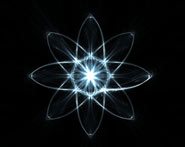


 الفيزياء الكلاسيكية
الفيزياء الكلاسيكية
 الكهربائية والمغناطيسية
الكهربائية والمغناطيسية
 علم البصريات
علم البصريات
 الفيزياء الحديثة
الفيزياء الحديثة
 النظرية النسبية
النظرية النسبية
 الفيزياء النووية
الفيزياء النووية
 فيزياء الحالة الصلبة
فيزياء الحالة الصلبة
 الليزر
الليزر
 علم الفلك
علم الفلك
 المجموعة الشمسية
المجموعة الشمسية
 الطاقة البديلة
الطاقة البديلة
 الفيزياء والعلوم الأخرى
الفيزياء والعلوم الأخرى
 مواضيع عامة في الفيزياء
مواضيع عامة في الفيزياء|
Read More
Date: 5-11-2016
Date: 7-10-2016
Date: 14-11-2016
|
The EPR Paradox
First of all, a short explanation. Although there are other examples of the Einstein-Podolsky-Rosen (EPR) paradox and violations of Bell’s inequalities, we choose this version because we can provide you with actual data to use in formulating your own solution to the paradox. A source of two correlated identical particles of opposite spins sits on the straight line between two identical particle detectors. Each detector can measure the polarization state of the entering particle, and each detector has three polarization switch positions (1, 2, and 3) and two display lamps (green and red). Each time the experimenter pushes the button, the two correlated particles are shot out of the source in opposite directions into the detectors. The data show two patterns:
(1) For runs that have the same switch settings on the two detectors, the same color lights flash on them.
(2) For all runs, without regard for switch settings, the pattern of flashing is completely random.
This experiment gets to the heart of QM and the application of its three rules for events. We can use classical mechanics to explain the first pattern: let the two particles carry the same instructions to be applied at the detectors. For example, this instruction set might work: flash red at switch positions 1 and 3; flash green at switch position 2. But this classical scheme with predetermined instruction sets will not handle the second pattern. Why not? What is the surprising conclusion?
Reproduced here is a small part of a data set for the experiment (from the Mermin reference in the answer). Each entry shows the switch settings and the colors the lights flashed for each run. The switch settings are randomly changed from run to run.
31GR 13RG 31RR 33GG
21RR 31RG 33GG 11GG
22RR 12RG 31RG 13RG
33GG 13GR 31RR 31RG
11GG 22GG 33RR 23GR
23RR 12RG 32RG 31GR
32GR 12GR 31RG 23RG
12GR 22GG 11RR 22RR
12RG 23GR 23GR 12GR
11GG 33RR 12GG 32GR
12GR 23GG 21GR 12GG
22RR 23GG 13GR 31GG
12GG 33RR 33GG 32RG
33RR 23GR 11GG 21GR
11RR 21GG 12RR 22GG
Answer
There seems to be no classical thinking that would reproduce the data set. A predetermined instruction set would be akin to an algorithm for generating random numbers but no such sets of numbers are truly random. One must accept the conclusion that Nature is quantum mechanical and therefore classical physics is only an approximation. The rules of QM agree with the results, but the details are too complicated mathematically to present herein. The references provide the extended discussion.
Even more surprising is the suggestion that locality is violated. That is, information from the first detector passes to the second detector without passing through imaginary spherical surfaces surrounding each, as if more dimensions exist in our world! Someone, someday, will determine a fundamental reason for this behavior of nature.



|
|
|
|
أكبر مسؤول طبي بريطاني: لهذا السبب يعيش الأطفال حياة أقصر
|
|
|
|
|
|
|
طريقة مبتكرة لمكافحة الفيروسات المهددة للبشرية
|
|
|
|
|
|
|
جامعة الكفيل تناقش تحضيراتها لإطلاق مؤتمرها العلمي الدولي السادس
|
|
|